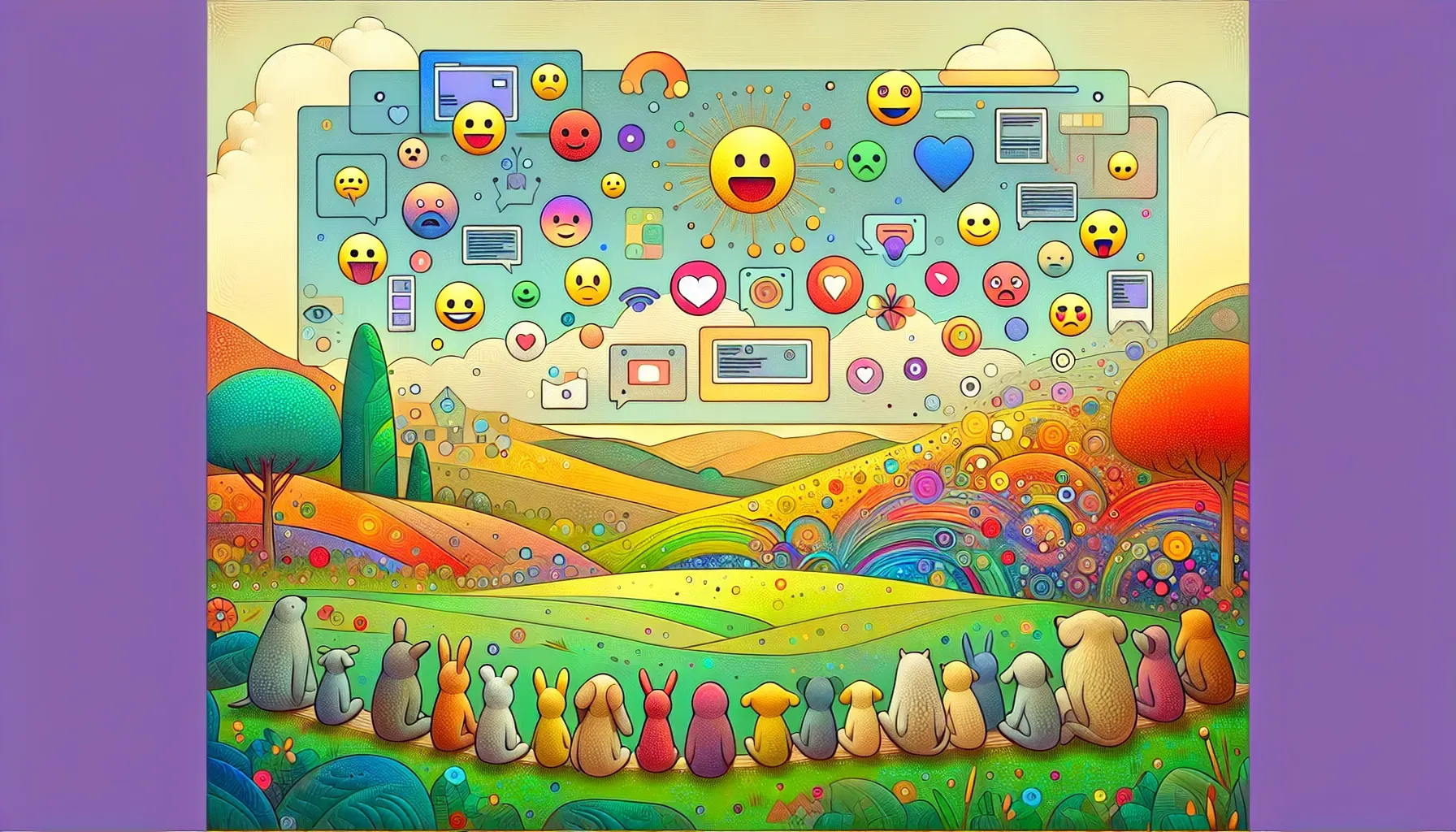Discovering Digital Marketing's Hidden Avenue: Emotional Analytics

In the ever-evolving landscape of digital marketing, understanding and leveraging emotional analytics has become a crucial avenue for optimizing campaign strategies. Businesses are increasingly recognizing the impact of sentiment analysis on user engagement and the overall success of their marketing efforts. This article will delve deep into the realm of emotional analytics, exploring its significance, underlying science, analytical techniques, and real-world applications within the digital marketing sphere.
Understanding the Importance of Emotional Analytics in Marketing
Unbeknownst to many, human emotions play a pivotal role in shaping online behaviors and decision-making processes. Emotional analytics seeks to decode and interpret these sentiments, providing valuable insights into consumer preferences and responses. By recognizing the emotional triggers behind user engagement, marketers can tailor compelling content that resonates with their audience on a deeper level.
How Emotions Influence User Engagement and Decision-Making
Emotional analytics leverages advanced technologies such as natural language processing and machine learning algorithms to recognize and classify emotions expressed in textual content, social media interactions, and other digital touchpoints. By scrutinizing linguistic cues, context, and tone, marketers can gauge the prevailing sentiments surrounding their brands and industry topics.
Crafting impactful campaigns begins with robust sentiment analysis techniques. This involves leveraging methodologies like keyword analysis, natural language processing models, and social listening tools to discern the prevailing emotions within target audiences. By categorizing sentiments into positive, negative, or neutral states, businesses can adapt their marketing strategies to align with consumers' emotional inclinations.
Key Techniques for Effective Sentiment Analysis
Sentiment data analysis often extends beyond textual content to encompass visual media and audio cues. Image recognition technologies and voice sentiment analysis further empower marketers to grasp the full spectrum of emotional responses within their target demographics. These multidimensional insights prove invaluable in tailoring content that authentically connects with consumers at an emotional level.
While traditional key performance indicators (KPIs) reflect quantitative metrics such as likes, shares, and click-through rates, emotional analytics introduces a qualitative dimension to social media measurement. It allows marketers to gauge the emotional resonance of their content by evaluating factors like sentiment distribution, emotional intensity, and thematic patterns across social platforms.
Emotional impact on social media goes beyond mere engagement metrics; it encompasses the ability of content to evoke empathetic responses and shape brand perceptions. By analyzing the emotional undercurrents within user interactions, businesses can refine their social media strategies to foster meaningful connections with their audience.
Measuring Emotional Impact Beyond Traditional Metrics
Several pioneering brands have harnessed emotional analytics to orchestrate resonant marketing campaigns that struck a chord with consumers. Coca-Cola's "Share a Coke" campaign stands as a testament to leveraging emotional connection by personalizing product packaging with individual names. Through sentiment analysis, Coca-Cola identified an opportunity to evoke feelings of personalization and camaraderie, resulting in a significant uplift in consumer engagement and brand affinity.
Similarly, Always' "Like A Girl" campaign challenged societal stereotypes by embracing empowerment and inclusivity. By harnessing sentiment analysis insights, Always crafted a narrative that resonated with audiences on an emotional level while sparking widespread conversations around gender equality.
Successful Brands Utilizing Emotional Analytics in Campaigns
Incorporating sentiment analysis into digital marketing endeavors necessitates harnessing cutting-edge tools specifically designed for capturing audience sentiments online. Platforms such as Brandwatch and Talkwalker offer robust sentiment analysis capabilities by monitoring brand mentions, dissecting social conversations, and discerning prevailing sentiments across various digital channels. These tools empower marketers to make informed decisions based on comprehensive sentiment insights.
Always' Empowering Campaign: Challenging Stereotypes
Moreover, advancements in natural language processing have given rise to sentiment analysis APIs offered by prominent tech giants like Google and IBM. These APIs equip businesses with scalable sentiment analysis capabilities built on machine learning algorithms that decipher textual sentiments with high accuracy.
Coca-Cola's Personalization Strategy: A Case Study
Translating sentimental insights into emotionally resonant content demands strategic finesse. Marketers must prioritize authenticity, relevance, and empathy when crafting content that connects with audiences on an emotional plane. Storytelling emerges as a potent tool for eliciting emotional responses—narratives that evoke empathy and convey shared values have proven instrumental in fostering lasting consumer connections.
Essential Tools for Capturing Audience Sentiments Online
Additionally, personalization acts as a catalyst for emotional engagement. Tailoring content based on segmented audience preferences not only amplifies relevance but also cultivates a sense of individualized connection. By infusing personalized elements into their campaigns, businesses can establish profound emotional resonance with diverse consumer segments.
While traditional key performance indicators serve as crucial benchmarks for evaluating digital marketing success, there are instances where instinctual understanding of consumer emotions takes precedence. Emotional analytics acts as a complementary tool rather than a replacement for traditional KPIs, offering nuanced insights that augment quantitative measurements.
The Role of Advanced Technologies in Sentiment Analysis
When faced with ambiguous consumer responses or complex market dynamics, trusting one's intuition—backed by emotional analytics findings—can guide marketers toward innovative strategies that transcend conventional metrics. Recognizing pivotal moments where emotional intelligence trumps traditional KPI reliance underscores the evolving landscape of digital marketing strategies rooted in human-centric approaches.
Frequently Asked Questions
Emotional analytics involves understanding and leveraging consumer emotions to optimize marketing strategies. It is crucial because it helps businesses tailor campaigns that resonate deeply with audiences, enhancing user engagement and overall marketing success.
Emotions significantly shape online behaviors by affecting decision-making processes. By decoding these sentiments, marketers can identify emotional triggers that drive engagement, allowing them to create content that connects with users on a deeper level.
Analyzing sentiment data involves methodologies like keyword analysis, natural language processing models, and social listening tools. These techniques help categorize sentiments into positive, negative, or neutral states, guiding businesses in adapting their marketing strategies accordingly.
Emotional impact on social media can be measured by evaluating sentiment distribution, emotional intensity, and thematic patterns. This qualitative analysis goes beyond traditional metrics like likes and shares, focusing on the emotional resonance of content with users.
Coca-Cola's "Share a Coke" campaign and Always' "Like A Girl" campaign are prime examples. Both brands utilized emotional analytics to create campaigns that resonated with consumers, fostering connections through personalization and empowerment themes.
Several tools are designed for capturing audience sentiments, including Brandwatch and Talkwalker. These platforms monitor brand mentions and analyze social conversations, providing marketers with insights into prevailing sentiments across various digital channels.
Storytelling enhances emotional engagement by creating narratives that evoke empathy and shared values. When marketers craft stories that resonate emotionally with audiences, they foster deeper connections and improve the effectiveness of their campaigns.
Personalization plays a crucial role in emotional engagement by tailoring content to specific audience preferences. By incorporating personalized elements into campaigns, businesses can amplify relevance and create a sense of individualized connection with consumers.
Marketers should rely on emotional analytics when facing ambiguous consumer responses or complex market dynamics. In such situations, intuition backed by emotional insights can guide innovative strategies that go beyond conventional metric reliance.
Emotional analytics complements traditional KPIs by providing nuanced insights that enhance quantitative measurements. While KPIs offer benchmarks for success, emotional analytics reveals deeper consumer sentiments that can inform more effective marketing strategies.
Check Out These Related Articles

The Truth About Digital Marketing ROI: It's Not Just About Immediate Sales

Data Lakes and Marketing Dreams: Harnessing Unstructured Data for Strategic Wins

Click Paths to Conversion: Mapping the Journey with Data Visualization Tools

